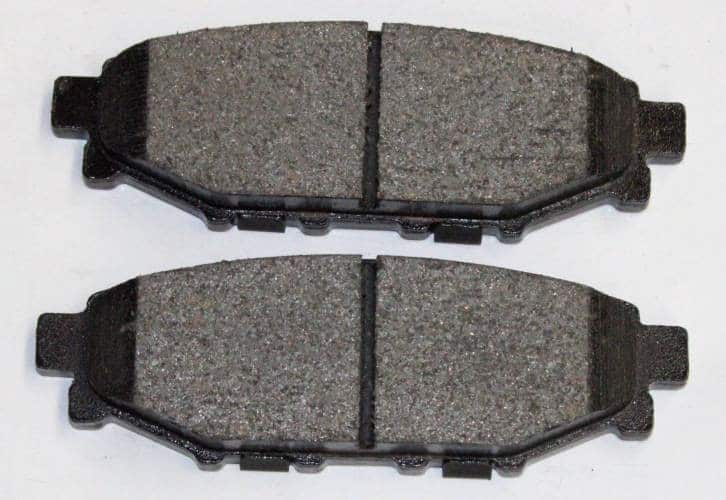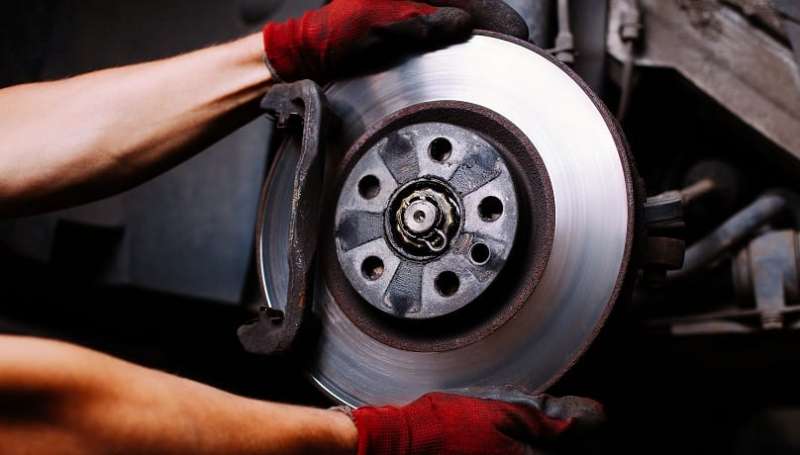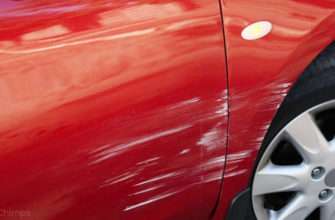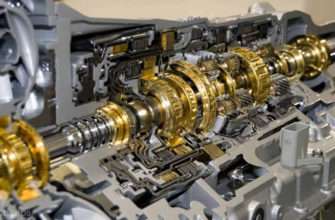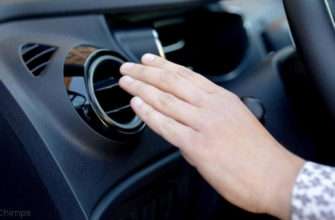If your car’s brake pads are damaged or broken, you need to replace them as soon as possible. Here are estimated brake pad replacement costs. Your brakes are perhaps the single most important component of your car. You need to be sure that your brakes work as expected to protect you, your passengers, and the people around you.
The brake pads will eventually need to be replaced. In this guide, you will learn how to recognize when it is time to change your brake pads and how much it should cost to replace them. Let’s start with the basics first.
What Are Brake Pads?
When you press the brake pedal, the hydraulic system engages as the brake fluid creates pressure, pushing the brake caliper, which in turn pushes the brake pads against the brake rotor. This process ultimately slows down or stops your wheels. Every time you engage the brakes, the friction that decelerates the car also slightly erodes the brake pads. The kinetic energy is converted to heat, making the brake pads become thinner in time. This process is gradual, but the friction will eventually make the brake pads deteriorate and they will eventually need to be replaced. Most cars use two brake pads per wheel.
Different Types Of Brake Pads
There are different types of brake pads depending on their composition. There are three main categories: semi-metallic, non-asbestos organic (NAO), and ceramic.
Semi-Metallic Brake Pads
Semi-metallic brake pads are often referred to as simply “metallic brake pads”. They are made using metals such as copper, steel, iron, and others. As metal is an effective conductor of heat, metallic brake pads can be used at a wide range of operating temperatures, making them a popular choice for performance drivers.
There are different types of semi-metallic brakes, depending on their intended use. Some are designed for the racetrack, while others are intended for the daily commute. The drawback of semi-metallic brakes is that they are usually noisier than their organic or ceramic counterparts. They also tend to affect the wear and tear of the brake system more negatively than other types.
Organic Brake Pads
Organic brake pads are the most popular choice for new cars in the United States. They are composed of different materials such as carbon compounds, fiberglass, rubber, and more. Initially, organic brake pads were made from asbestos. In time, it was discovered that asbestos was carcinogenic, which led to the production of non-asbestos organic (NAO) brake pads.
The benefit of organic brake pads is that they are cheap and do not subject the brake system to accelerated wear and tear as metallic brake pads do. The drawback of organic brake pads is that they are not fit for extreme temperatures, though this is unlikely to affect the majority of drivers. They also tend to wear out faster, which means they need replacing more frequently than other types.
Ceramic Brake Pads
As the name implies, these brakes are made of ceramic material. The greatest benefit of these brake pads is that they are very quiet. They also last longer than the other types of brake pads and inflict less wear and tear on the rest of the braking system.
The only major disadvantage is the manufacturing cost, which results in ceramic pads being more expensive to buy. They tend to handle temperatures far better than organic brake pads but metallic pads will do a better job at the racetrack.
When Should The Brake Pads Be Replaced?
As a general guide, brake pads should be replaced every 50,000 miles. However, many other factors play a part such as the type of braking pads, driving style, and driving conditions. Many brake pads are fitted with a brake wear indicator which ensures drivers know when the brake pads are due for a change. Four main types of indicators exist:
- Physical
- Mechanical
- Electrical
- Position sensor
A physical indicator can be seen by inspecting the brake pad visually. There is an inspection opening that allows you to see the extent of the wear. A cut may be placed which indicates to what level the brake pad can be used before a replacement is necessary. The brake pad may have a piece of metal that will come into contact with the brake disc when it is depleted, creating a squealing sound. This type of indicator is mechanical.
An electrical indicator works similarly to a mechanical indicator but a light will activate in the dashboard when touched. Position sensors are usually used in heavy-duty vehicles and work by sensing the positions of the brake pads and other components of the braking system. If you suspect that it takes longer than usual to stop your car, it’s worth inspecting your braking system. Sometimes, an issue called “brake fade” can occur.
Brake fade occurs when the brake pad and brake rotor are overheated and are unable to provide sufficient friction to stop the car. This can occur if, for example, you roll down a mountain road and keep braking in order to maintain an appropriate speed. It is also worth noting that brand new pads can be more prone to brake fade. This happens because the materials might need time to embed into the rotor face. Driving about 500 miles on familiar roads should be sufficient to get your brakes to their full effectiveness. Make sure to be extra careful when braking during this time.
Changing The Brake Pads
When changing the brake pads, it is important to replace them on both wheels located on the same axle. Both brake pads on the same axle are usually worn out to the same extent. However, the front brakes usually do more work than the rear, which is why the front pads are larger and wear out more quickly.
If you are considering replacing the brake pads yourself, it is something that is generally discouraged. The only exception to this is if you are very used to working with cars. The process may seem simple, but you really do not want to mess up the brakes of your car. If your car has an electronic parking brake or automatic emergency braking, additional preparation will be needed. If you are confident in your ability to work with cars, you can check out edmunds.com’s guide on how to change brake pads.
Brake Pad Replacement Cost
Now that you know more about brake pads, you might still be wondering: “How much are brake pads?” As with every type of automotive part, the price varies greatly depending on factors such as brand and type of braking pads, as mentioned earlier in this article.
Brake pads will likely set you back between $20 and $100 for one set (axle), while labor will cost you about $70 to $130. Keep in mind that the price differs significantly by type and brand. Also, a cheaper brake pad will usually deteriorate faster, meaning you will need to change them more frequently, thus costing more in the long run.
Summary
Your brake pads play a crucial role in stopping your car, keeping you and others safe. The brake pads generally need to be replaced every 50,000 miles but many factors such as driving style, type of brake pads, and driving conditions also play a role. There are three main types of brake pads: semi-metallic, organic, and ceramic. Each of these types has its own pros and cons.
Most brake pads have some type of indicator. This may be mechanical, where you will hear a squealing sound when it is due for a replacement, or you can inspect them yourself. New brake pads can be more prone to braking fade, which occurs because the new pads need time to embed into the rotors. Take extra care after new pads are installed.




